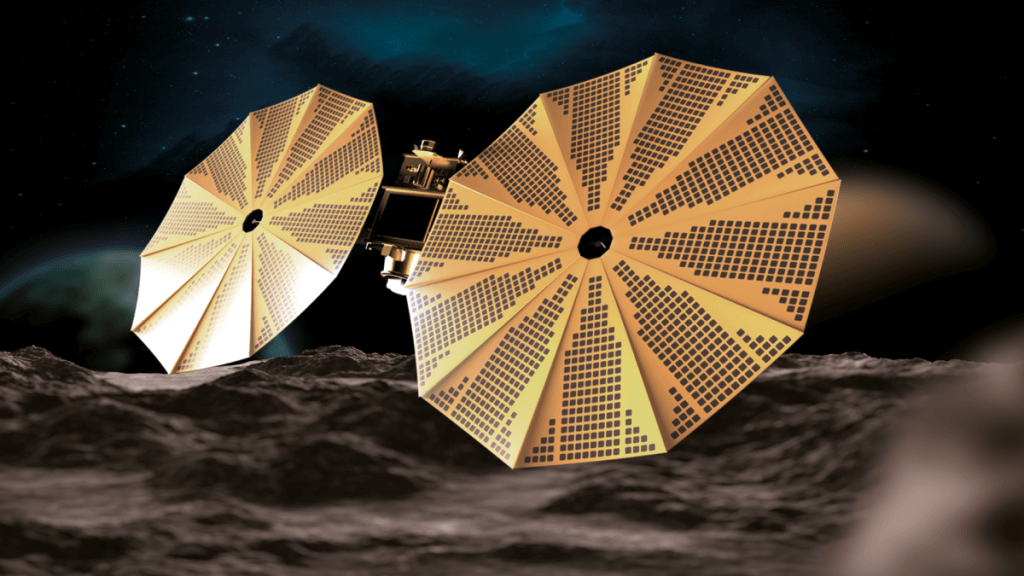An asteroid that may host life’s building blocks will get a visit from a United Arab Emirates (UAE) spacecraft about a decade from now, if all goes according to plan.
In October 2021, the UAE announced that it plans to launch an ambitious mission to the asteroid belt in 2028. That mission will visit seven different space rocks, and even land on one of them, an asteroid called (269) Justitia.
On Sunday (May 28), the nation gave us some new information about this bold asteroid mission — including its name, the Emirates Mission to the Asteroid Belt (EMA).
“We will never cease to look ahead; we will never cease our efforts to develop a brighter future for our young generations,” Sheikh Mohammed bin Rashid Al Maktoumbin Rashid Al Maktoum, the vice president and prime minister of the UAE and the ruler of Dubai, said in a statement.
The EMA spacecraft will be named after the sheikh, we learned Sunday: It will be called the MBR Explorer.
Related: UAE’s ambitious asteroid mission will tour 7 space rocks
The MBR Explorer will visit its first asteroid in 2030, and will follow an orbital path allowing it to pick up speed from several planets along the way. (It’s common for spacecraft to get such “gravity assists” from worlds like Venus or Mars to save on fuel, and to do side observations to test their instruments.)
After passing by six asteroids, the mission aims to touch down upon Justitia in 2034 with a small lander that will deploy from MBR Explorer. Justitia may have organic molecules on its surface; organics are the building blocks of the complex molecules that could form life in the right circumstances.
More generally, scientists seek water and organics all over the solar system to better understand how life arose on Earth. That search may be especially meaningful on Justitia, which may have formed closer to our planet and then migrated out to its current position in the asteroid belt between Mars and Jupiter, scientists say.
The rest of the mission manifest includes flybys of the asteroids (10254) Westerwald, (623) Chimaera, (13294) Rockox; (88055) 2000 VA28, (23871) 1998 RC76 and (59980) 1999 SG6, all meant to represent “different classes of asteroid with varied compositional types,” UAE Space Agency officials said in the same statement. Justitia and Chimaera are around 31 miles (50 kilometers) in diameter, with the remaining asteroids less than 6 miles (10 km) across each.
Four science instruments have been announced to probe the geology, composition and structure of the asteroids: a high-resolution camera, a thermal infrared camera, a mid-wavelength spectrometer and an infrared spectrometer.
The UAE Space Agency was formed in 2014 and is one of the youngest space agencies in the world; by comparison, NASA was formed in 1958 from previous U.S. government groups. The UAE’s Hope Mars orbiter, which launched in 2020, was the first Arab spacecraft to reach the Red Planet, making it on the first try, no less.
The first UAE astronaut, Hazzaa al Mansoori, launched on a short mission to the International Space Station in 2019. There is another UAE astronaut in orbit right now: Sultan Al Neyadi, who launched to the orbiting lab in March on SpaceX’s Crew-6 mission.

